Pioneer KURO KRL-37V 37in LCD TV Review
Pioneer KURO KRL-37V 37in LCD TV
The KRL-37V is Pioneer's first KURO LCD TV so can we expect the same sort of quality we've seen from its plasmas?
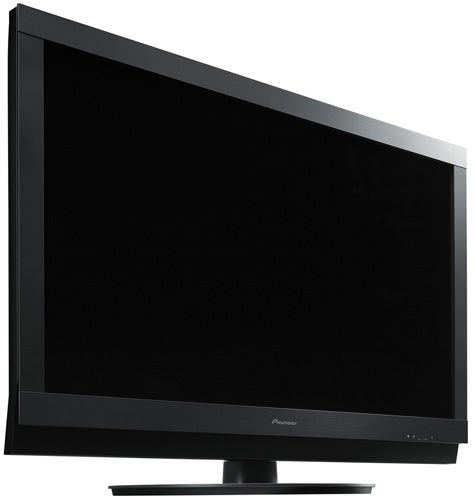
Verdict
Key Specifications
- Review Price: £1278.99
If I’m honest, when I first heard Pioneer mention that it was going to start making LCD TVs to go alongside its world-beating plasma TVs, it sounded like a mistake.
After all, Pioneer can hardly expect me or anyone else with even a passing interesting in AV technology to forget overnight all the pro-plasma, anti-LCD rhetoric the brand has been presenting to the world for years now. So immediately there’s the question of whether Pioneer’s debut LCD TVs can suddenly be so good that they justify the brand flying in the face of its own philosophy.
Pioneer’s decision to ‘go LCD’ also initially struck me as an admission of failure; a tacit admission that however persuasive its plasma arguments – not to mention its KURO plasma TVs – the sheer weight of market support for LCD had finally made it impossible for Pioneer to avoid its ‘hated’ rival format.
As one further and most pressing concern, I couldn’t help but fear that Pioneer’s switch to LCD might end up devaluing the ‘expensive but worth it’ status the brand has been so carefully building over the past couple of years. After all, Pioneer doesn’t make its own LCD screens (they’re sourced from part owner, Sharp), and hasn’t had anywhere near as long to develop a clear performance advantage with LCD as it has with plasma.
With all this in mind, it’s fair to say that the first Pioneer LCD TV to cross the threshold of our test facilities has a hell of a lot of pressure on its shoulders. Just as well, then, that the KRL-37V starts alleviating that pressure – and some of the near hysteria surrounding the whole Pioneer LCD decision – almost immediately, simply by virtue of its size.
For at 37in across, it’s currently the largest of Pioneer’s LCD models (ahead of an upcoming 46in model). And as such it suddenly becomes prosaically clear that the 37V doesn’t actually represent Pioneer caving in to the LCD crowd, but rather it’s simply Pioneer catering for people who want a Pioneer screen but can’t fit/don’t want a 50in or bigger screen in their homes (Pioneer’s 42in plasmas have pretty much disappeared now).
So with Pioneer’s LCD decision so extensively depoliticised before we’ve even really got the TV out of its box, the only things really left for me to worry about are whether the TV justifies its relatively premium price point, and whether it does the Pioneer name proud. Both of which essentially boil down to me simply deciding if the TV is actually any good!
Aesthetically the 37V doesn’t do all that much for me, truth be told. Sure, it’s exceptionally well made, using a brushed aluminium finish that confidently overwhelms the glossy plastic of practically every other LCD TV around these days. And it’s perfectly matched with the similar high-quality finish of Pioneer’s new Blu-ray players and AV receivers, making it a potentially essential purchase for Pioneer completists.
But although the quality is there once you get up close enough to touch the 37V, somehow the metal finish just doesn’t help the TV stand out from the crowd as much as I would have liked from a merely visual viewpoint – at least at the sort of distance most people will be watching a 37in TV from.
There’s a practical issue with the brushed aluminium finish too, in that it makes the 37V extremely heavy by LCD standards. This runs rather counter to the ‘lighter is better’ boasts associated with Pioneer’s KURO plasma screens, and could potentially make wall-mounting the TV an issue in some homes.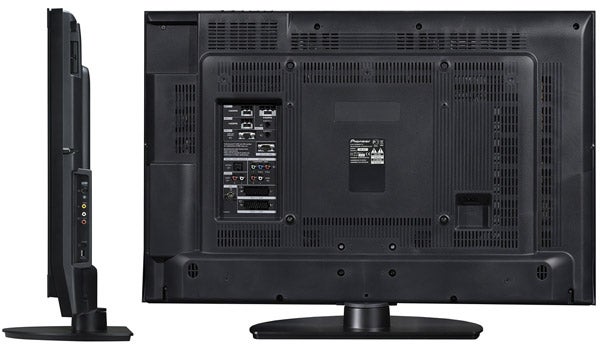
Turning to the 37V’s rear, there’s another mild disappointment in store as I turn up only three v1.3 HDMI sockets when many much cheaper TVs are now starting to offer four. What’s more, there’s also no sign of a USB or SD card slot. This is particularly surprising given that Pioneer’s KURO plasmas are renowned for not only carrying a USB port, but also carrying Pioneer’s superb Home Gallery photo browsing interface.
It’s hard not to see this as an early reminder that the 37V heralds to some extent from Sharp rather than Pioneer – but I’m keen not to sound prejudicial by labouring this Sharp issue, so I’ll move swiftly on!
Positive connection discoveries include an RS-232 port for system builders to use (essential on a premium TV like this one), an optical digital audio output, and a D-Sub PC port.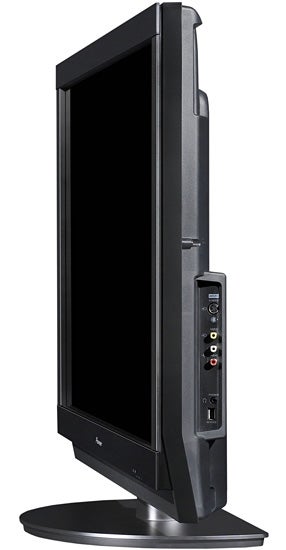
As you’d hope of any 37in LCD TV these days, the 37V carries a Full HD resolution of 1,920 x 1,080 pixels. Plus it’s got 100Hz processing to counter LCD’s traditional motion-handling problems, and Pioneer’s renowned PureCinema feature for auto-detecting video and film sources and adjusting the TV’s progressive scan processing accordingly.
That’s kind of it on the processing front, though. And with nowhere near as much to talk about in terms of innovations in the TV’s core construction as we get with Pioneer’s plasma TVs, I’m starting to feel concerned about exactly when the 37V is going to start persuading me that it’s really worth comfortably more than most other 37in LCD TVs. Thankfully, though, the 37V does have one potentially crucial point of differentiation versus rival LCDs: a high contrast front filter.
Using technology similar to that found on Pioneer’s plasma TVs, this filter over the 37V’s pictures has the potential to greatly increase the picture’s contrast range, shadow detailing and colour response versus what we might expect from a normal TFT-style LCD screen design.
There are other features worth noting too – albeit nothing unique. For instance, it’s great to find the 37V retaining Sharp’s innovation whereby the HDMI sockets automatically detect what device is attached to them. And so, for instance, if you connect a PS3, the HDMI you’ve used will automatically be relabelled PS3. Nice.
This ultra-friendly approach couldn’t present a greater contrast with the extremely unhelpful approach to HDMI activation employed on Pioneer’s KURO plasmas. The set also has an automatic backlight adjustment facility like those found on pretty much any LCD TV these days, and there’s a light sensor built into the TV so that you can get the TV to adjust its picture settings in response to the ambient light levels of your living room.
At this point I have to say that as I was exploring the 37V’s feature count, I couldn’t help but feel that the set’s menus were rather reminiscent of those of Sharp’s TVs. And there was me saying earlier that I wouldn’t labour the Sharp heritage point! Oops.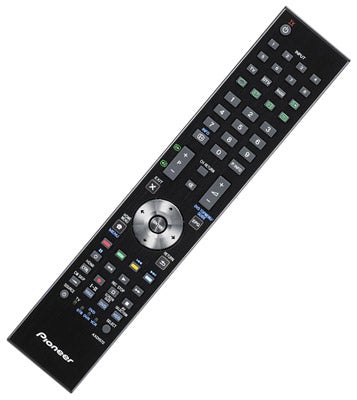
The 37V’s remote, at least, is all Pioneer’s work, combining the usual gorgeously heavyweight design and intuitive layout.
Let’s now turn, at last, to the key issue of the 37V’s performance. Is it really better than Sharp’s LCD TVs? Is it good enough to justify the TV’s premium price? And could it even be as good as Pioneer’s KURO plasmas?
With relatively little else to distinguish the 37V from other brands of LCD, it’s clearly up to the high contrast filter to really make a difference. And thankfully, it does. My first awareness of what Pioneer’s filter was bringing to the party was really just a vague feeling that somehow I was connecting more directly to the picture than happens with most rival LCDs – including, tellingly, those from Sharp.
Trying to analyse where this feeling was coming from, the first specific point I noted was that black levels look slightly deeper, richer and definitely filled with more shadow detail than is commonly the case in the LCD world.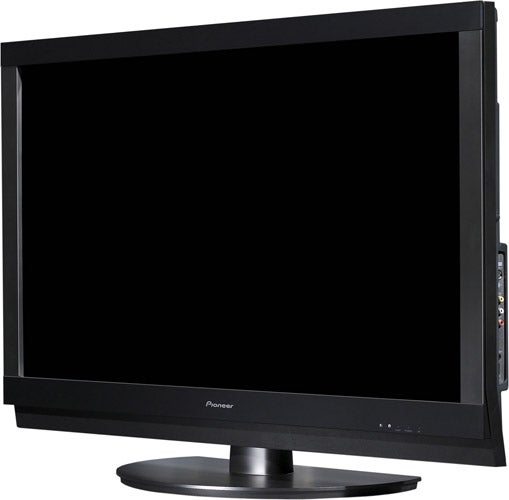
Then I noticed that colours are better than usual, too, with sumptuously rich saturations going hand in hand with some startling tonal richness and subtlety. In fact, I’d go so far as to say that the 37V’s colours when watching HD are among the most expressive and accurate I’ve seen on any LCD TV to date. This was one facet of the Pioneer high contrast filter that I really hadn’t expected to be so impressed by, but I’m happy to be proved wrong.
The 37V’s HD pictures also look slightly sharper and more detailed than those of many other LCD TVs. This is particularly true during dark scenes, where the high contrast filter’s impact on the key combination of brightness and contrast in the picture helps the set produce enhanced greyscale and shadow detail subtleties that work wonders during dark sequences such as those aboard the star cruiser at the start of Sky’s HD broadcast of ”Star Wars: Episode III”.
With startlingly bright peak white reproduction also helping the 37V produce a really dynamic picture range, the combined benefits of the high contrast filter comfortably exceed my expectations, and make the 37V what it needs to be: not only one of the finest LCD picture performers around, but one which uncannily delivers the sort of subtle strengths revered by the AV cognoscenti rather than the more vulgar charms seen on cheaper models.
The 37V is not without its picture problems, however. First, although colours are terrific with HD, bizarrely I spotted a number of slightly odd colour tones during standard definition viewing.
Next, despite the screen carrying 100Hz processing, I still noticed signs of motion blur at times, with HD and standard def alike.
Another issue is the TV’s viewing angle, as black levels and colour tones drop off markedly as you move down the TV’s sides; a fact which is thrown into particular relief if you see the 37V alongside any of Pioneer’s ‘angle-independent’ plasma TVs. 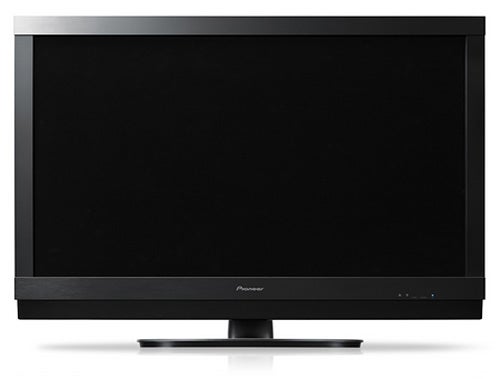
This viewing angle issue affects the vast majority of other LCD TVs, too, of course. But some stupidly optimistic part of me had held out a hope that the high contrast filter might miraculously get round this traditional LCD failing.
Finally, and probably most controversially, although the 37V’s black levels are good, I still felt there was room for further improvement. For they still suffer sporadic moments of gentle greyness over dark corners, at least where those dark corners are having to coexist in the frame with bright image elements. In this black level respect more than any other there’s simply no denying that the 37V’s LCD technology is no match for Pioneer’s KURO plasma technology.
To some extent this is arguably not a very relevant point, as Pioneer’s LCD TVs are, as we said earlier, just being offered to fill in the considerable size ‘gap’ at the bottom of Pioneer’s current TV offerings, and not as rivals for the plasma TVs. 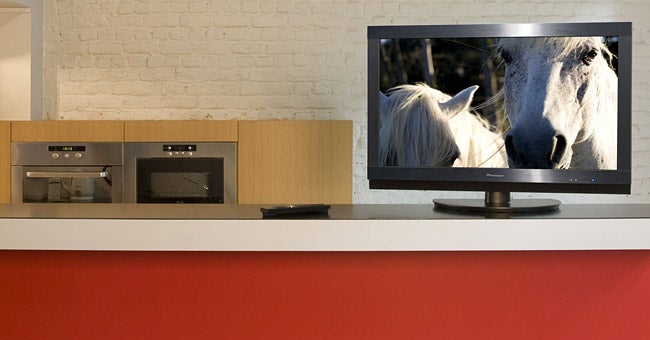
But it does make me wonder if it was really a wise decision for Pioneer to launch the LCD TVs under the same KURO branding as the plasma sets. After all, KURO is Japanese for ‘black’, and was introduced as a sub-brand name for the plasma TVs to reflect their truly groundbreaking black level response. Yet while good, the black level response on the 37V is certainly not ‘truly groundbreaking’.
Turning to the 37V’s audio, the levels of volume possible are fine, and the mid-range is excellent, helping vocals sound realistic and well-rounded. There’s plenty of definition in the treble register too. But I was slightly surprised – given Pioneer’s usual audio prowess – to find a lack of bass leaving some of the treble information sounding a bit harsh and isolated, and denying me that satisfying bass ‘whump’ during explosions.
”’Verdict”’
Is Pioneer’s first KURO LCD TV good? Yes it is. Does it produce better pictures than the Sharp TVs it shares its heritage with? Definitely. Does it produce better pictures than most other LCD TVs period? Yes.
However, at the same time it’s not as spectacular – either in itself, or in comparison with the absolute best of its rivals – as Pioneer’s KURO plasmas. Therefore, unless you’re really keen on getting a TV aesthetically matched to your growing pile of Pioneer AV kit, you might argue that ultimately it doesn’t quite do enough to justify its premium price.
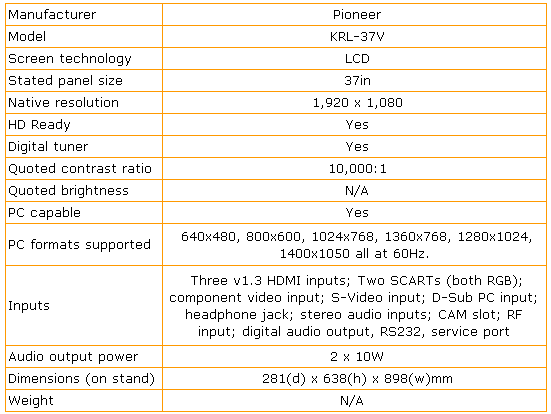
How we test televisions
We test every TV we review thoroughly over an extended period of time. We use industry standard tests to compare features properly. We’ll always tell you what we find. We never, ever, accept money to review a product.
Trusted Score
Score in detail
-
Features 8
-
Value 7
-
Image Quality 9
-
Design 8
-
Sound Quality 8

